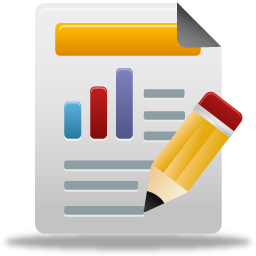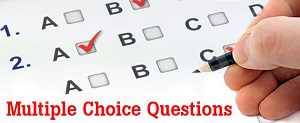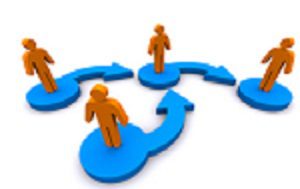MCQs Biology F.Sc. Part 2 ( 2nd Year )
Chapter No.16
Support and Movements
Total MCQs = 165
91. The movement in jelly fish is called:
(A) Belly propulsion
(B) Jet propulsion
(C) Float propulsion
(D) None of these
Answer:
(B) Jet propulsion
92. Cross bridges form between:
(A) Troponin and tropomyosin
(B) Calcium and sodium
(C) Sarcolemma and sarcoplasm
(D) Myosin head and actin filament
Answer:
(D) Myosin head and actin filament
93. The limb hones first appeared in
(A) Jawless fishes
(B) Lobe finned fishes
(C) Amphibians
(D) Reptiles
Answer:
(C) Amphibians
95. What is the skeletal system’?
(A) All the bones in the body
(B) All the muscles and tendons
(C) All the body organs both soft and hard tissue
(D) All the bones in the body and the tissue that connect them
Answer:
(D) All the bones in the body and the tissue that connect them
96. How many bones are there on the average in human body?
(A) 33
(B) 206
(C) 639
(D) It varies by the individual
Answer:
(B) 206
97. Which of the following statements is incorrect?
(A) Bone is where most blood cells are made.
(B) Bone serves as a storehouse for various minerals.
(C) Bone is a dry and non-living supporting structure.
(D) Bone protects and supports the body and its organs.
Answer:
(B) Bone serves as a storehouse for various minerals.
98. Which bone protects brain?
(A) Patella
(B) The cranium
(C)Sacrum
(D) None of these
Answer:
(B) The cranium
99. Besides the brain, the skull also protects:
(A) The lungs
(B) The diaphragm
(C) The body cells
(D) The sense organs
Answer:
(D) The sense organs
100. The purpose of the rib cage is to
(A) Protect the stomach
(B) Protect the spinal cord
(C) Protect the heart and lungs
(D) Provide an object to which the lungs attach
Answer:
(C) Protect the heart and lungs
101. What makes hones so strong?
(A) Silica
(B) Cartilage
(C) Blood and marrow
(D) Calcium and phosphorous
Answer:
(D) Calcium and phosphorous
102. What is the difference between cartilage and bone?
(A) Bone is rubbery, and cartilage is firm
(B) Cartilage is rubbery, and bones is firm
(C) Bone is a more primitive tissue than cartilage
(D) Bone is inside the body, and cartilage is outside
Answer:
(B) Cartilage is rubbery, and bones is firm
103. The hollow space in the middle of bones is filled with:
(A) Air
(B) Blood
(C) Bone cells
(D) Bone marrow
Answer:
(D) Bone marrow
104. What is the difference between compact bone and spongy bone?
(A) They have different bone marrow
(B) They are made of different materials
(C) They have different sizes of bone cells
(D) They have different arrangement of body cells
Answer:
(D) They have different arrangement of body cells
105. What is a joint?
(A) A hinge
(B) A ball and socket
(C) The place where two bones are joined
(D) The place where tendons are fastened together
Answer:
(C) The place where two bones are joined
106. Muscles are made of:
(A) Silica
(B) Polyester threads
(C) Calcium and phosphorous
(D) Groups of cell fibres
Answer:
(D) Groups of cell fibres
107. How do muscles attached to the bones move the body?
(A) Automatically
(B) all movement only
(C) Push movement only
(D) Push and pull movement
Answer:
(B) all movement only
108. What is the function of a tendon?
(A) To link bones to bones
(B) To link muscles to bones
(C) To link muscles to ligaments
(D) To bind the cells in compact bone closer together
Answer:
(B) To link muscles to bones
109. Skeletal muscle is described by all of the following except:
(A) Striated
(B) Voluntary
(C) Multinucleate
(D) Autorhythmic
Answer:
(D) Autorhythmic
110. The walls of hollow organs and some blood vessels contain this muscle tissue:
(A) Striated
(B) Skeletal
(C) Cardiac
(D) Smooth
Answer:
(D) Smooth


